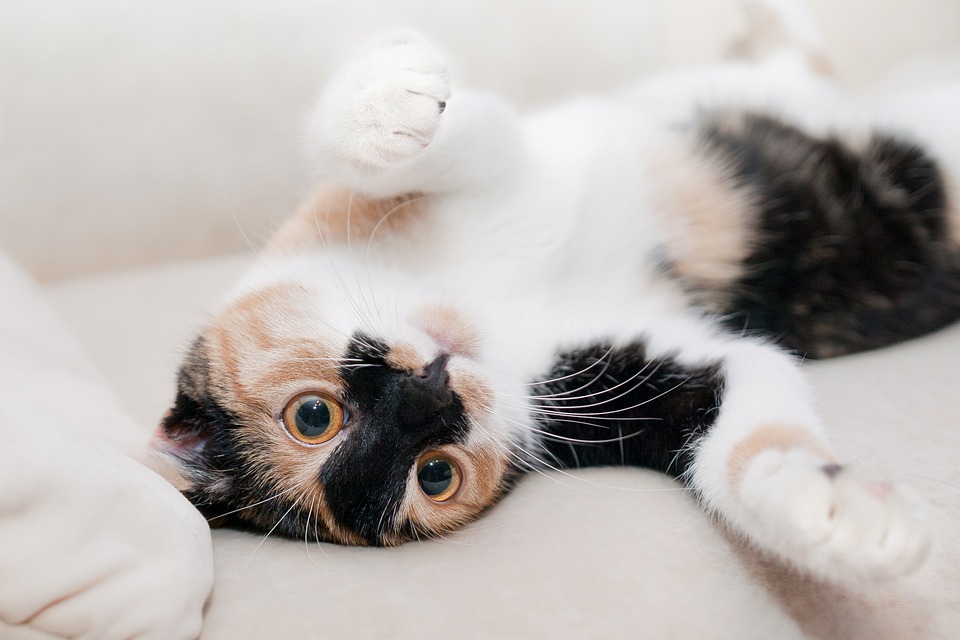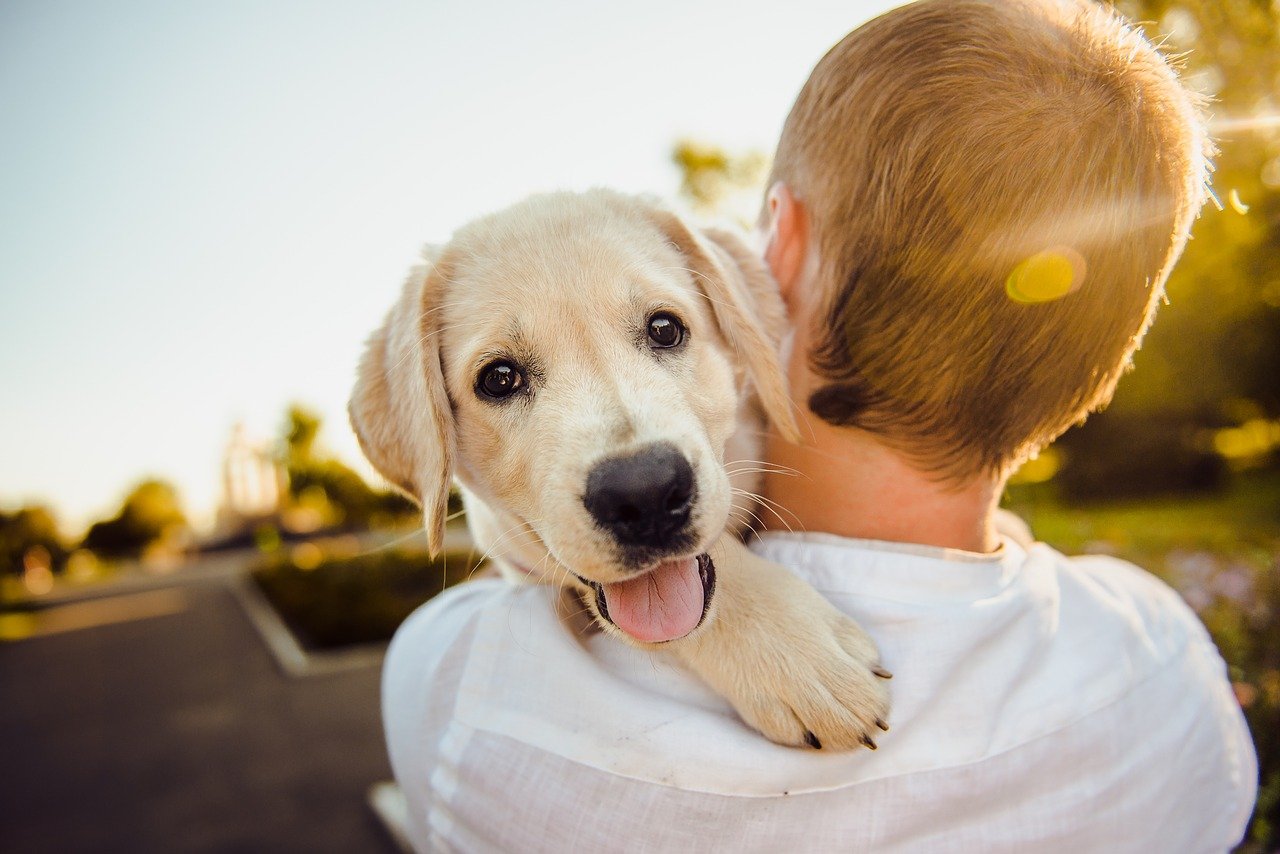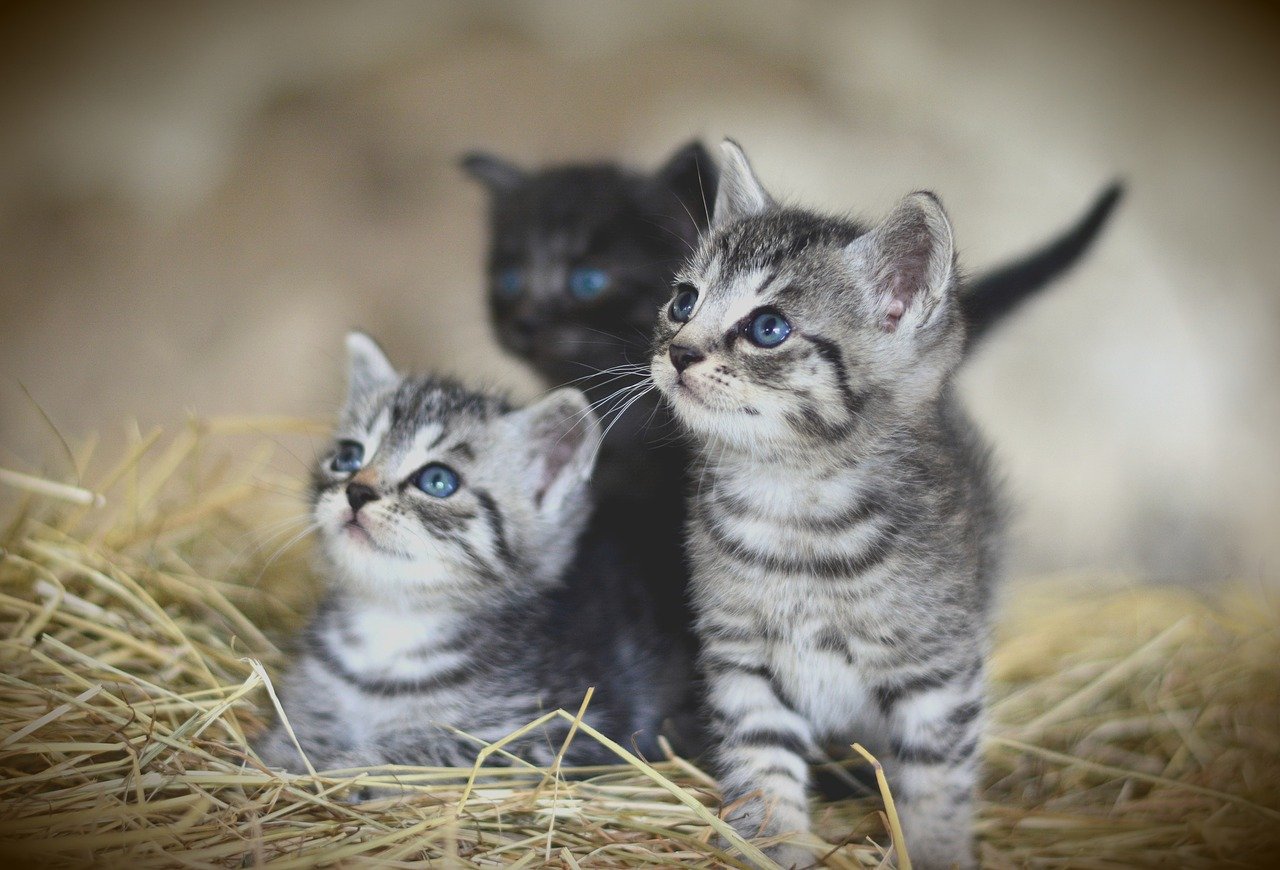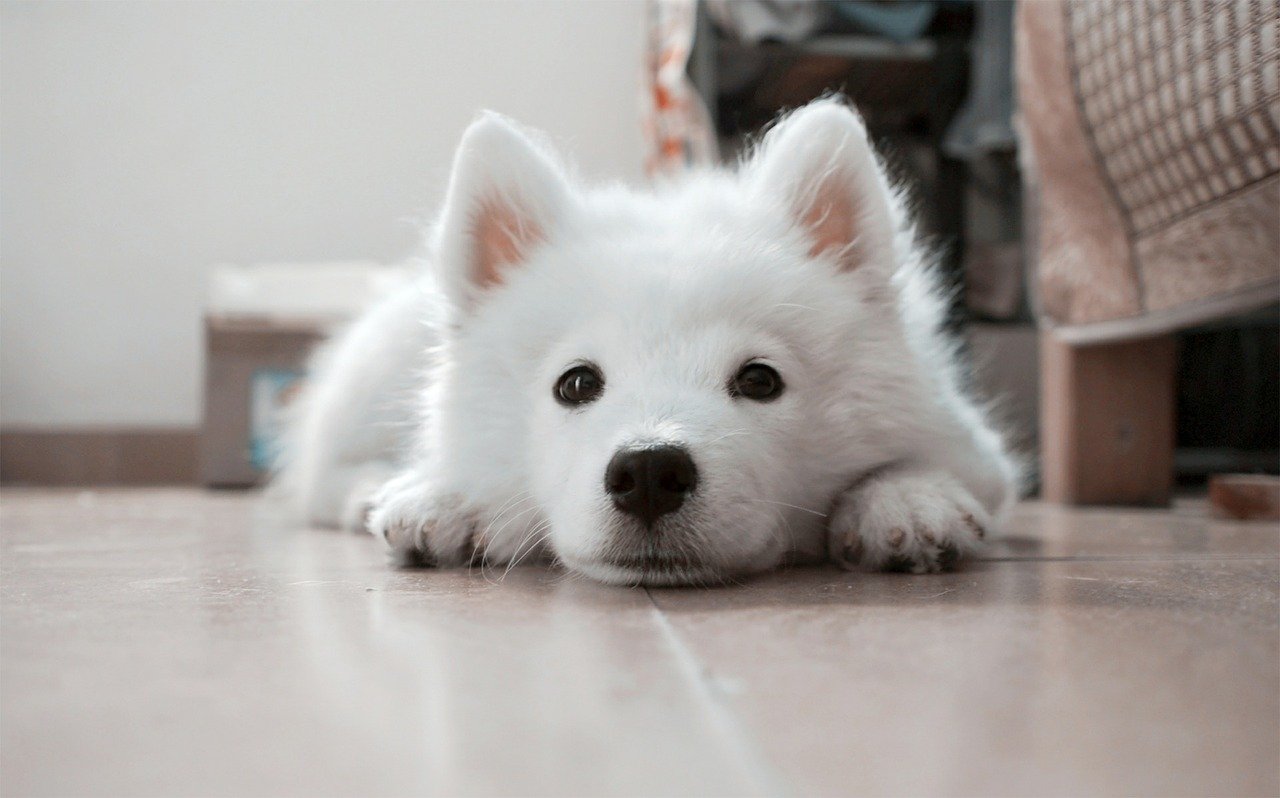Magnificent Belgian Shepherd - Temperament, Needs and Care
The Belgian shepherd is a very intelligent, gentle and energetic breed that is perfect especially for big families. Because of their size and lively temperament, the Belgian shepherd needs a lot of exercise - keep that in mind if you're thinking of getting a dog of this type. Everyday walks are the absoluteminimum. Learn the characteristics of the Belgian shepherd, the types of the breed and what kind of care do those animals need. Thanks to this, you will be ready to welcome the new friend in your house.
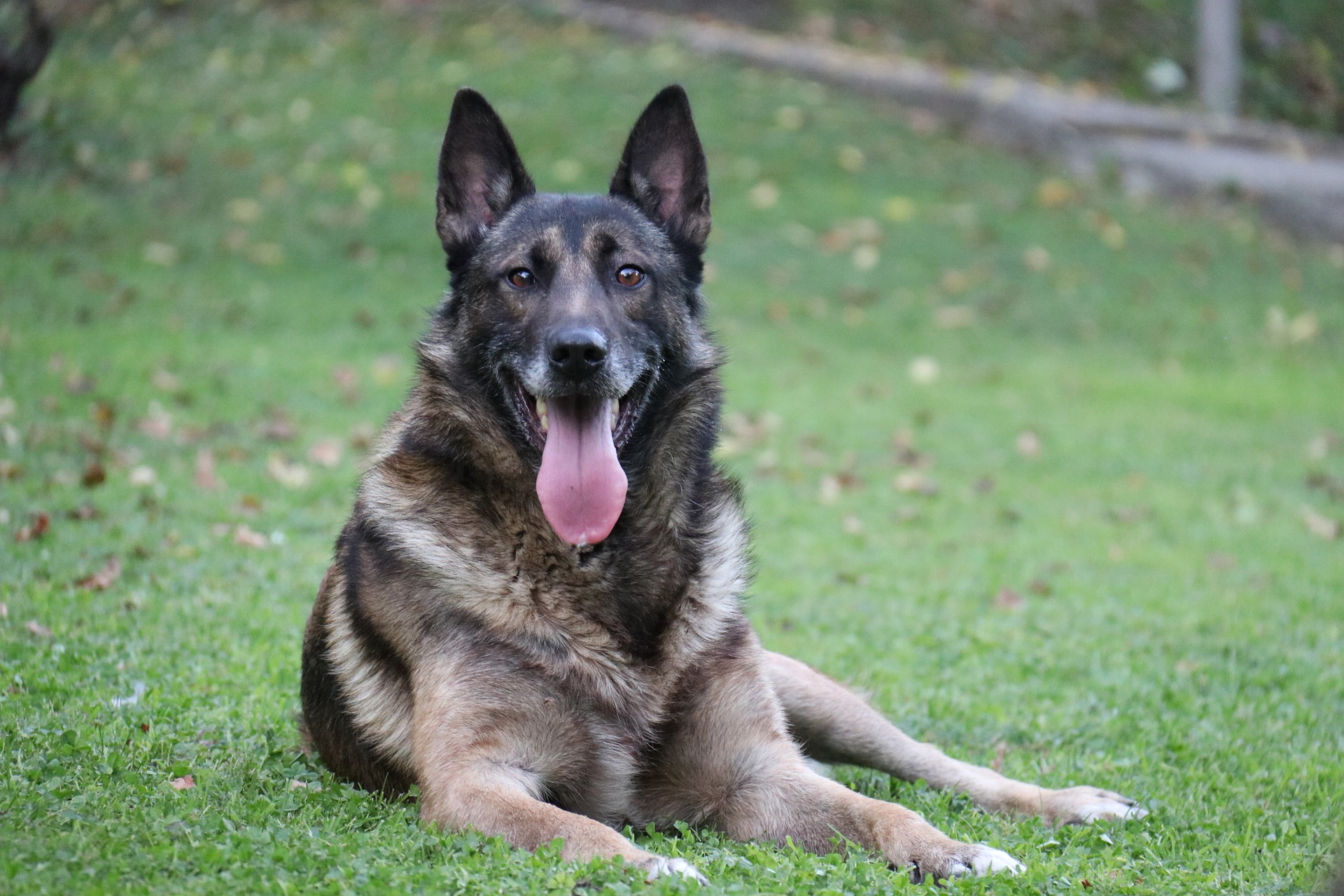
What does the Belgian sheepdog look like?
The Belgian shepherd is a large dog that looks very similar to the German shepherd. Its straightened back makes it look very noble. Flat forehead, triangular ears and medium-length, not too large tail are other characteristics of the breed.
Note that although those two breeds look very similar, their temperament is very different. Currently, there are three basic types of the Belgian shepherd, classified according to their coats. Those are:
- short-haired (the most popular, also known as the Belgian malinois)
- long-haired
- wirehaired
Belgian shepherds - what are the types of the breed?
Although all Belgian shepherds look very similar, they are divided into types. Each of them has different traits. FCI has approved four main types of the breed:
- Belgian Malinois - with short hair that looks a little fawn
- Belgian Groenendael - with long black hair, very elegant and dignified
- Belgian Leaknois - slightly fawn, wirehaired animal
- Belgian Tervueren - with a long coat, typically fawn or grey
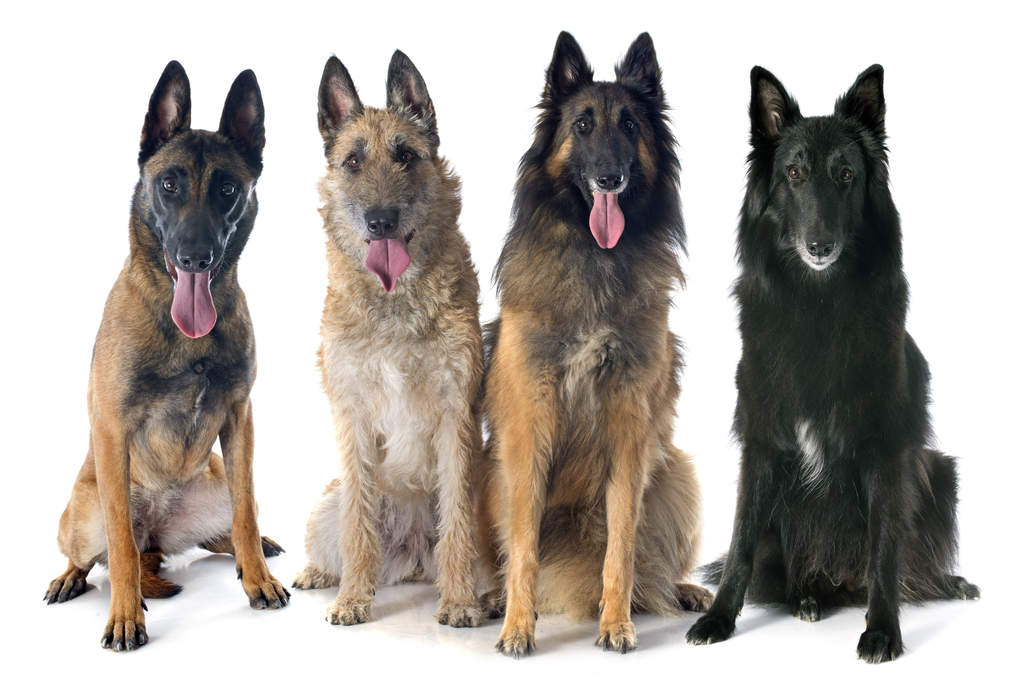
Belgian Malinois vs. German shepherd - what are the differences?
As already mentioned, the Belgian Malinois looks very similar to the German shepherd. Nonetheless, those breeds are not the same. So, what are the differences between Belgian Malinois vs. German shepherd?
The main difference is weight. Belgian Malinois is a little bit (10%, to be exact) smaller and lighter than his German cousin. German shepherds have “thicker bones” while the Belgian shepherd looks more sleek.
As for the colors, the German breed often has the characteristic dark saddle on the back. While it’s not a rule - there are dogs without it - Belgian Malinois don’t have this feature. The coloring of both breeds are similar - black, tan, fawn or grey. That’s why it’s easy to confuse Belgian Malinois vs. German shepherd.
Both of the breeds are highly intelligent and often work as the police dogs. They are easy to train, although they require a lot of effort. As for the energy levels, Belgian Malinois is slightly more active than the German variety. In addition, Belgian shepherds cope worse with loneliness - they definitely need more attention from the owner.
Belgian sheepdog - temperament
Although many people claim that the Belgian shepherd is not a typical family dog, it has no problems with large groups of people. It is a very intelligent dog that learns quickly. Keep in mind, though, that Belgian shepherds tend to be very stubborn, so it’s recommended to start training as soon as possible.
Belgian shepherds are very loyal to their owners. If they are good to them, the dog will reward it with good behaviour and obedience. Don’t forget that the animal needs a lot of physical exercise. Everyday walks is the absolute minimum, and sometimes too little for the pet to release its emotions. Make sure to provide enough playtime and workout for the dog.
The Belgian shepherd has developed a strong protective instinct, and it can sense a coming danger. For this reason, the breed is perfect for guarding, and it often serves the police. The Belgian shepherd has no problems with tall obstacles - some dogs can jump over even a 2-meters tall fence.
Belgian shepherd - what diet does it need?
Similar to any other dog, a Belgian sheepdog needs food appropriate for its age and the activity level it’s provided with. Too much food might lead to obesity or even serious health issues. For this reason, it is recommended to visit a specialist who will tell what the animal needs - especially when it’s still a puppy.
A larger Belgian shepherd should be fed two or three times a day. The best time is after a walk, so that the animal can release its energy without any concern for stomach issues.
What to feed a Belgian sheepdog? Standard dry or wet dog food will suffice, in this case. You can also prepare homemade food for your dog. If so, make sure to balance the diet and include enough vitamins and minerals. Control the calorific value, as well.

How much does a Belgian Malinois weigh?
Belgian shepherds are quite large dogs. Adult males reach up to 60 centimeters in height and 25 to 30 kilograms in weight, depending on the stature. Females are a little bit smaller, as they typically grow up to 55-58 centimeters and weigh no more than 25 kilograms.
Remember that the values are approximate only. It means that your Belgian shepherd might be smaller or larger than that and as long as the specialist doesn’t notice any health issues, there’s no need to worry.
Is the Belgian shepherd prone to diseases?
The Belgian shepherd isn’t vulnerable to any special diseases. A well-cared-for, fed with the right food and provided with enough exercise - is not likely to get sick. It’s also resilient to external conditions and changing temperatures.
Despite the above, Belgian shepherds (rarely) catch certain diseases. Here are the most common ones:
- sight problems (cataracts or retinal thinning),
- epilepsy,
- hip dysplasia,
- thyroid issues.
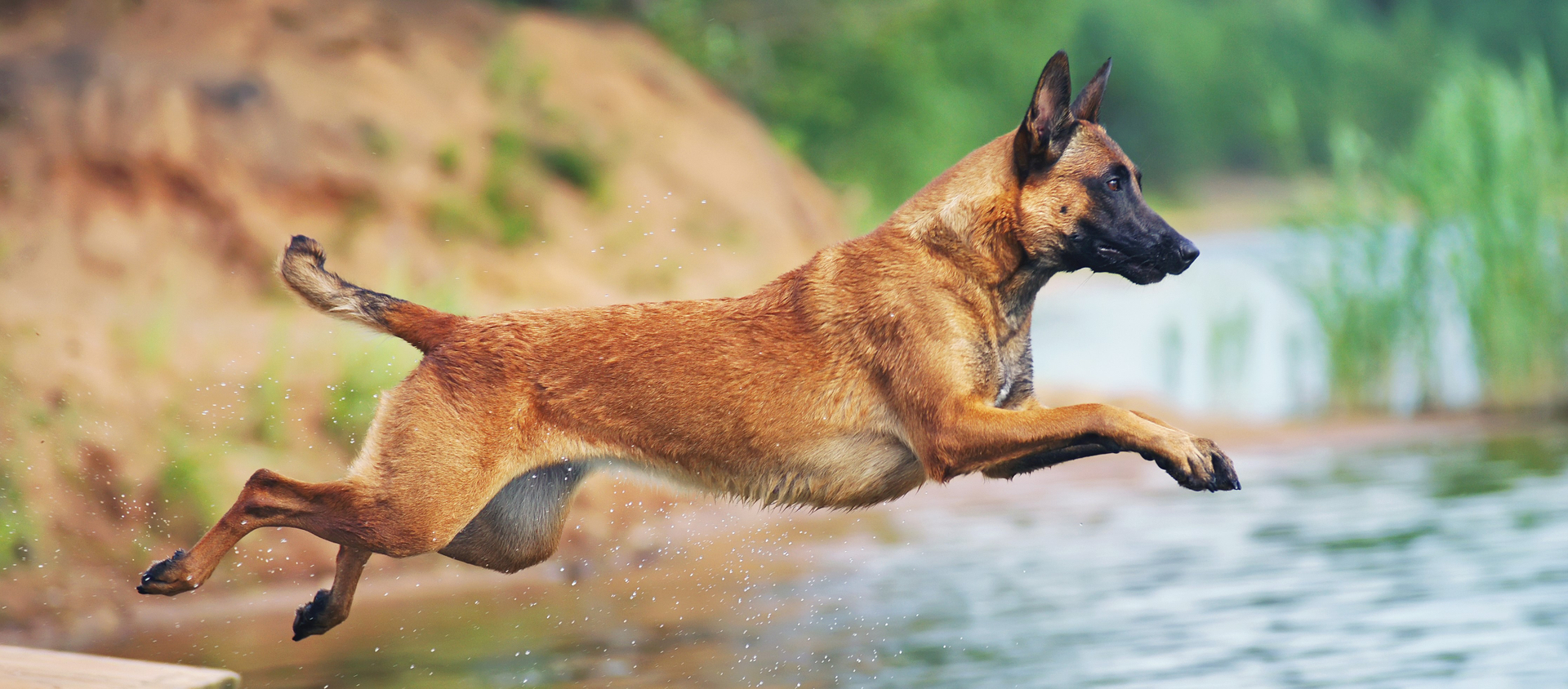
How to take care of a Belgian shepherd?
The basis of the Belgian shepherd care involves taking care of the fur. A lot depends on the particular type of the dog, as short-haired and wirehaired dogs need grooming just once a week. Long-haired Belgian shepherds have to be brushed practically every day.
Because those animals spend a lot of time outside, they tend to get dirty. For this reason, regular baths are necessary. It’s also very important to control the length of the claws and cut or file them as needed. If you are anxious to do it yourself, you can always ask a specialist for help.
Who is the Belgian sheepdog for?
An owner of a Belgian shepherd has to be able to give a lot of attention to the dog. Assertiveness and rigour are very important - especially if the dog just starts training. It’s good if the owner likes sports and exercise. This way, one can provide enough important activity to the dog.
Because Belgian shepherds don’t cope well with loneliness, they are not suitable for busy and working people.
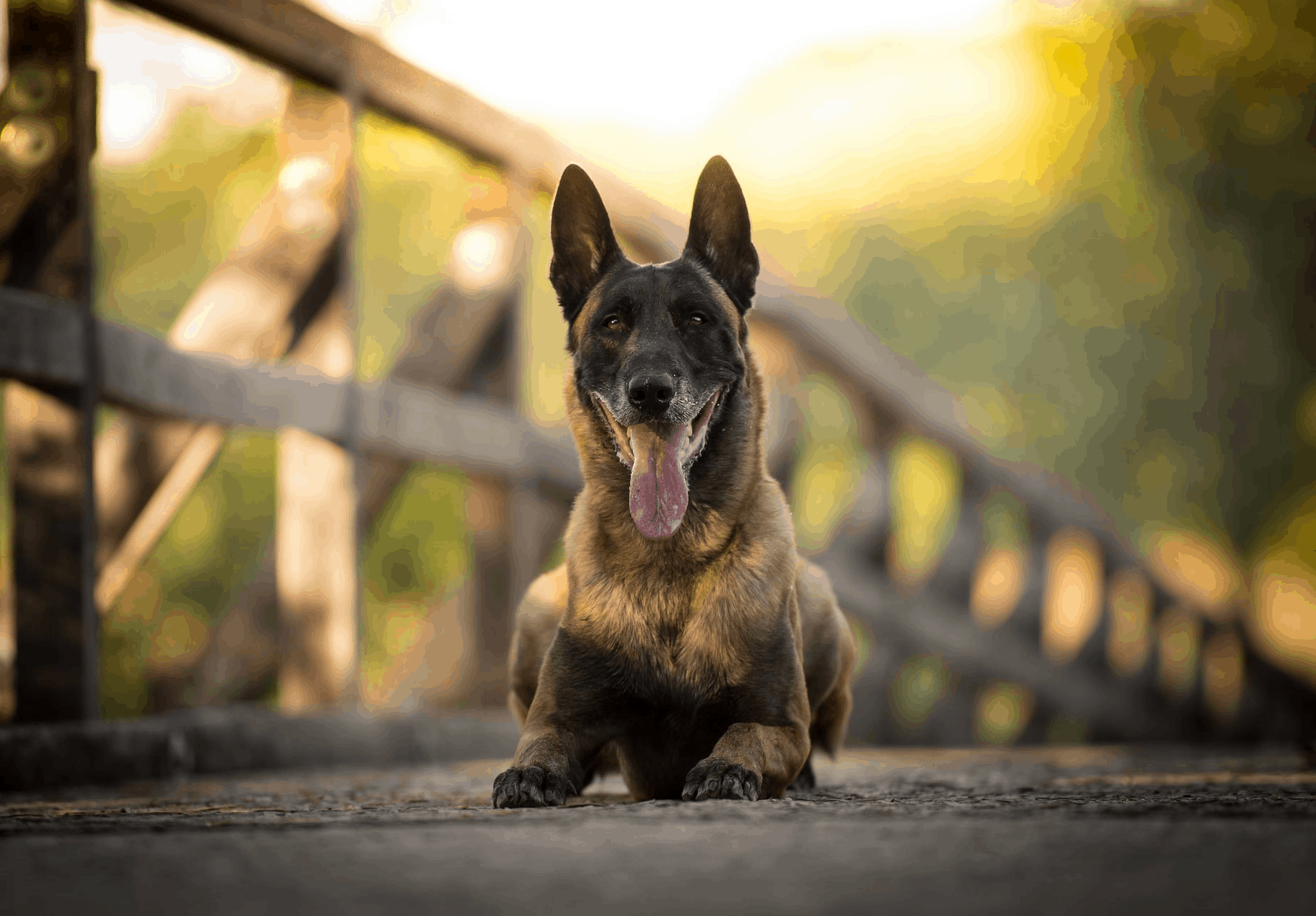
How to train a Belgian shepherd?
The Belgian shepherd is a very obedient dog - provided that it is trained from the earliest days. Make sure that everyone who has contact with the animal follows the same patterns of behaviour so that the dog doesn’t feel confused and lost.
Training the dog on your own is not the best idea, in this case. It’s recommended to attend to at least several classes with a specialist who will set the right course for you. It’s very important to eliminate all uncontrollable behaviours.
Does Belgian shepherd get along with other pets?
Belgian shepherds are good with other dogs of a similar character. Keep in mind that the shepherd has to initiate playtime, they don’t like to be “provoked.” They get easily irritated, which might lead to unpredictable situations.
As for other animals, e.g. cats - the dog tolerates them as long as it feels confident and is raised with them from a puppy - or have been slowly introduced. It might be distrustful and distanced.
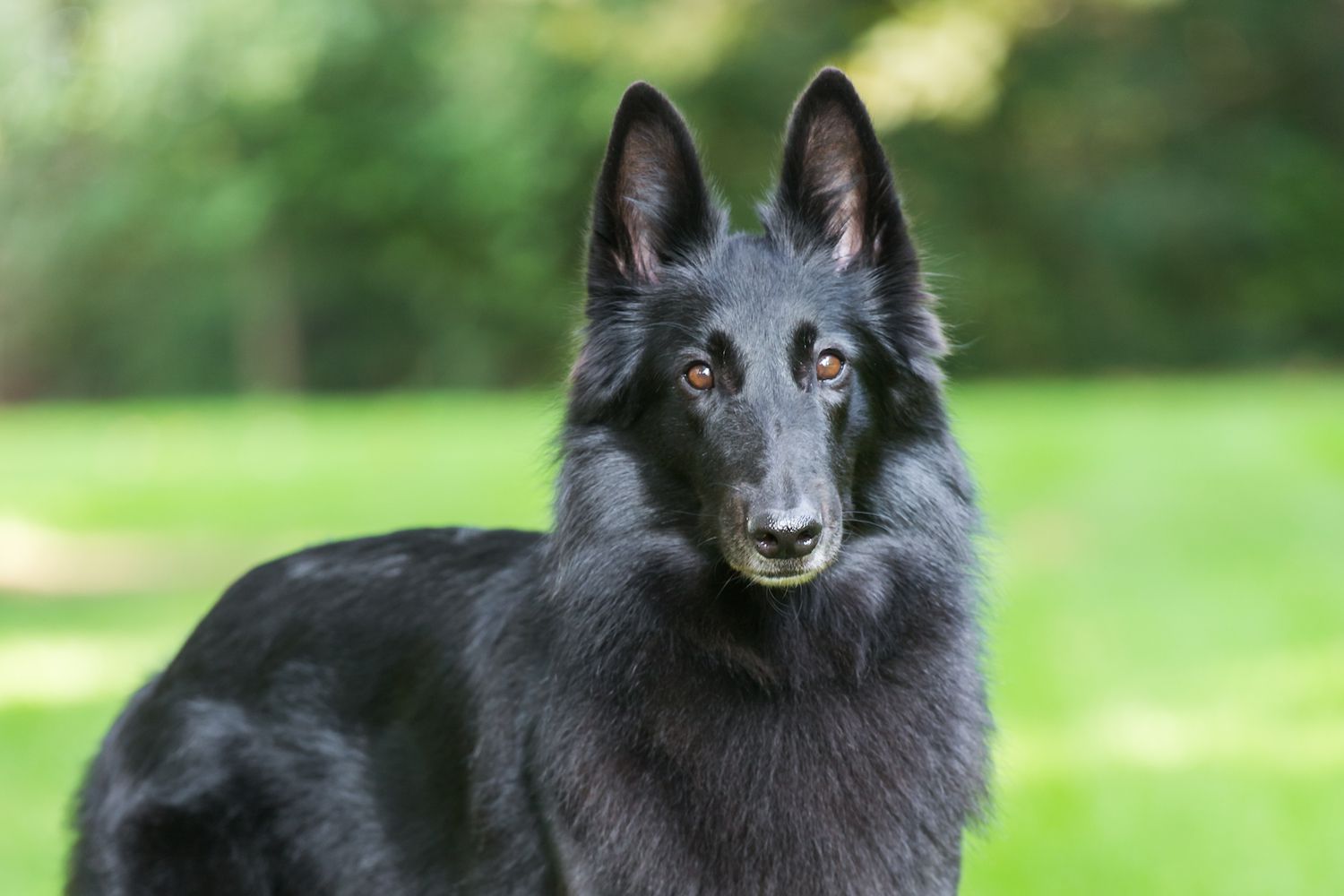
What is the best leash for a Belgian shepherd?
Because of their size, Belgian shepherds are quite strong animals, so a well-fitted leash is the absolute necessity. The sturdy accessory allows for walks even in crowded places.
A leash for the Belgian shepherd should match its weight. Pet shops offer different variants that can hold a dog up to 50 kilograms. You can pick an automatic leash but make sure its quality is good enough - the price of such equipment is usually higher. Safety is the priority here, though, so don’t save on it.
Belgian shepherd price
The price of Belgian shepherds varies - it all depends on the variety you choose. Belgian Malinois is typically the cheapest one, and for this reason this breed is the most commonly picked. Belgian Terveuerens cost a little bit more. Keep in mind that the price depends on whether the dog comes from a registered breeder. The better the breeder’s reputation, the more expensive the dog.
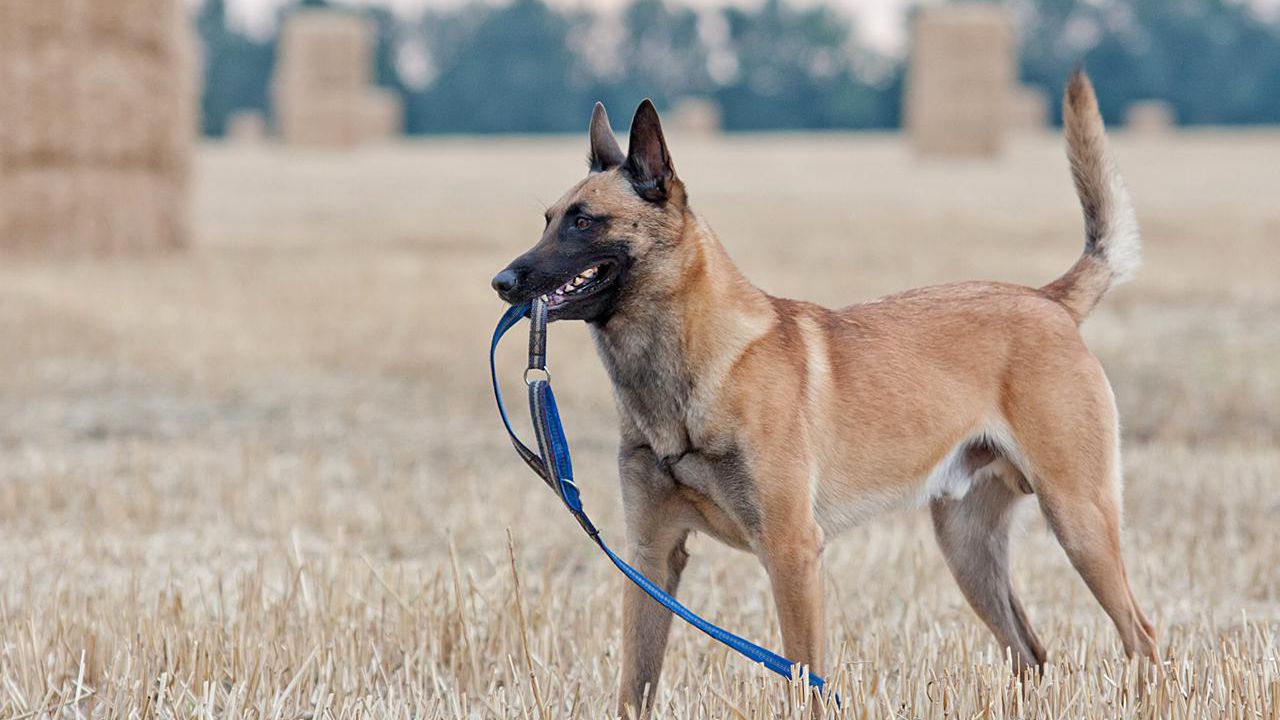
📍 How much does the Belgian shepherd cost?
The price of the Belgian shepherd might vary. A lot depends on the variety of the dog. It's also important that the breeder is registered. The more renown the breeder is, the more expensive the dog.
📍 What does the Belgian shepherd look like?
The Belgian shepherd is a large dog of a massive build. Depending on the variety, it has either short or long hair. The breed has a characteristic long snout, flat forehead and triangular ears. As for the color - slightly fawn, black or grey animals are the most common.
📍 How to train the Belgian Malinois?
The Belgian Malinois is not very hard to train, although you need to be consequent and disciplined. If you lack experience with this breed, you should ask a specialist for help. Professional trainers will show you the basic exercises you should train with your dog.
📍 How long do Belgian shepherds live?
10-14 years is the lifespan of the Belgian shepherd. A proper care, feeding and exercise are the key factors here. Dogs with inborn diseases live shorter, but those are very rare cases.
Featured articles
Maybe you're interested

